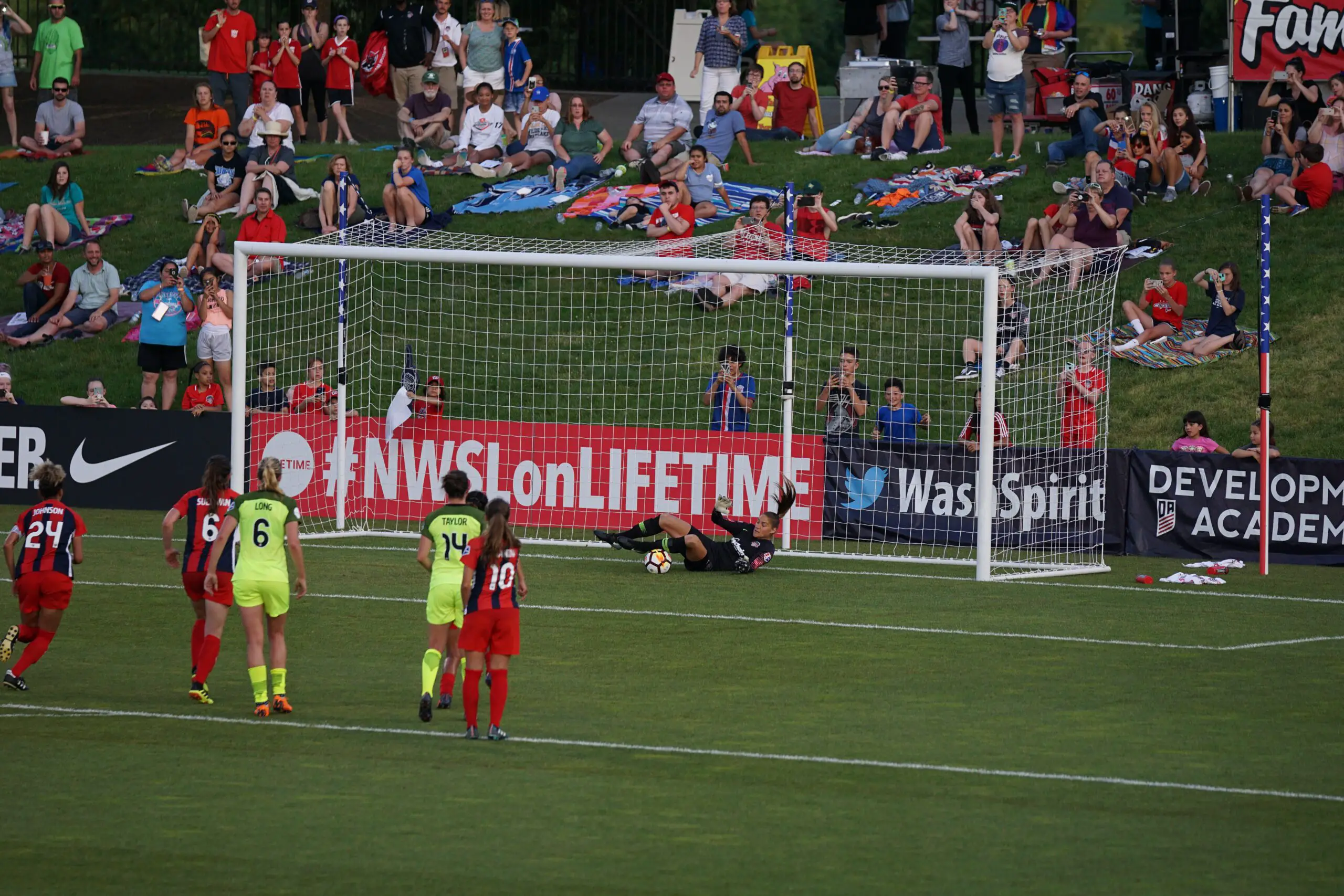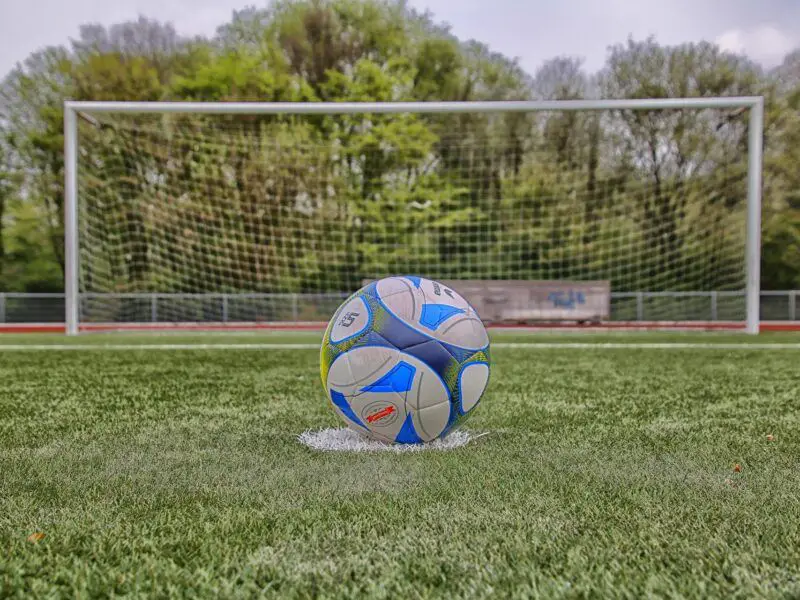For a football fan, there aren’t too many words worse than, ‘its going to a penalty shootout’.
What is one of the most brutal ways to decide a game of football, can literally be the difference between a team winning and losing a cup.
However, while kicking penalties down the local park with a few mates can be fun.
No one wants to be involved in a penalty shootout, due to the nerves and pressure that it causes.
Now if you have been following football, and have noticed a game going to a penalty shootout.
You may be wondering what it is, how it works as well as questions like why are they tied.
So in this post, I will explain each of these and hopefully give you the answers you are looking for.
Table of Contents
What Is A Penalty Shootout?
A Penalty Shootout is a scenario that is called upon at the end of the game when a winner can’t be decided from open play.
This only happens when a game requires a winner, for example of a knockout tournament.
That is because in order for a team to go through to the next round there must be a winner.
So if two teams can’t be separated after 90 minutes and then an extra 30 minutes, a penalty shootout will have to take place.
As for leagues games, penalty shootouts don’t occur at the end of the game, as they are not needed.
A league campaign consists of only 90-minute games, with 3 points going to the winner and 1 point for a draw.
That means if a league game finishes level, the game will finish and a point will go to both teams.
How Does A Penalty Shootout Work
How a penalty shootout works is quite simple.
Five players on each team will be chosen to take a penalty.
They will each walk from the center circle, place the ball on the spot and attempt to beat the keeper.
A player is allowed to choose how big their run-up is, however, is only allowed to kick the ball once.
Taking in turns to take the penalties, whichever team then scores the most out of the five will win the shootout along with the match.
While five takers are chosen for each team, the penalty shootout can also be stopped before everyone has had an attempt.
For example, if Team A scores its first 3 penalties and Team B misses its first three, the shootout will be stopped and Team A will be awarded the victory.
That is because it is mathematically not possible for Team B to win, meaning the last four takers won’t be required to take one.

What Happens Before A Penalty Shootout?
Before a game gets to a penalty shootout there are a number of things that happen first.
In this section, I will talk you through each of the events that occur, before the dreaded shootout takes place.
Extra Time
Now before a game gets to penalty kicks, the game will go through 30 more minutes of extra time.
This is basically the last attempt to find a winner in normal time, with two periods of 15 minutes on either side a small half-time.
This will happen in tournaments like the World Cup, Euros, etc.
However for some competitions to prevent fatigue on players extra time can be skipped altogether.
For instance in the UK, for the EFL domestic cup, the competition changed the rules on how games were decided.
This rule meant that games from the 2018/19 season onwards would no longer go to extra time and straight to penalties.
Due to these competitions games taking part during the week, playing only 90 minutes, therefore, takes the strain of football clubs with fixtures coming up at the weekend.
This is though an exception as most competitions where a winner is needed, will normally go to extra time.
Coin Toss
Now before it begins a coin toss will take place between the two captains of each team.
One of the captains will guess at the side of the coin.
In order to choose preference on the end of the pitch, they want to shoot at.
As well as a second toss to choose whether to go first and second.
The coin toss is quite important for the penalty shootout from a psychological view.
As winning the toss and taking penalties in front of your own fans, is much better than against the oppositions.
As for choosing whether to go first and second, there does tend to be more pressure on the team that goes second.
Choosing Penalty Takers
As players start to get nervous and the cramp is kicking in, managers will have the task of choosing penalty takers.
Choosing penalty takers can happen as early as 5/10 before the 90 minutes/extra time is up.
Especially if the game is cagey and the end result is looking to be a penalty shootout.
A manager will start jotting down names and get all the players together to see who is up for taking one.
Normally what will happen is a player will nominate themselves for a penalty.
So if you have seen a penalty shootout on TV, those 5 takers that step up first for their side have likely volunteered to take one.
Deciding On The Order Of The Penalties
Along with choosing the players, the order of them also has to be decided and submitted to the referee.
Now whether you want to take one or not, you will be put on this list of 1 to 11, which even includes keepers.
As while a team would hope to win within the first 5, there is the possibility that more penalties will be required to be taken.
This will mean other players in the team, who initially didn’t want to take one will therefore have too.
Hence why each player will have to be put down somewhere in the order.
Now what I find interesting about the order, is that it can be quite random.
You will have strikers who you would think would be the best fit for a penalty, not being in the first five.
But you will have defenders who are the first ones to put their hand up.
Therefore they will be some of the first to step up and take a penalty for their team.
Some players even have rituals when it comes to order.
For instance, Cristiano Ronaldo, who is one of the best penalty takers in the world will always go last of the 5 takers.
Some suggest that this is with the motive of getting the headlines of a victory-winning penalty.
What Happens If A Penalty Shootout Is A Tie?
In a penalty shootout, a common scenario is that the score can remain level after 5 kicks each.
This can happen when each team has either scored all of them or have missed the same amount.
As a result, the penalties must continue into sudden death to find a winner.
Like I mentioned earlier, 11 takers are chosen, so sudden death will see those between 6 and 11 potentially take a penalty.
Now I say potentially because its the first team to score and the other to not.
So if during the first two kicks of sudden death, Team A score and Team B don’t, then the shootout ends.
If either both miss or both score, then it will continue, until one scores’s and one doesn’t.
This theoretically means that the penalties can go on for a while, especially if every taker is clinical.
Something that was the case in the 2020 Europa League Final between Manchester United vs Villareal.
With it being 1-1 after extra time, the game went to a penalty shootout where a total of 21 penalties was taken.
Of them, 20 were scored, with Villareal coming out triumph with an 11-10 scoreline due to sudden death.
Now lastly If in sudden death, it gets to a point where each of the 11 players have taken a penalty, then it starts all over again with the first penalty takers..
Other Things That Can Happen During A Penalty Shootout
Penalty shootouts can be nothing short of controversial.
With so much tension and pressure in the air, a lot can happen.
Making an already intense penalty shootout even more dramatic.
Here are a few things/common questions that are asked about penalty shootouts.
Red Cards and Yellow Cards Being Issued Out
Even though the game is no longer in open play, a penalty shootout is no exception when it comes to yellow cards and red cards.
If a player commits an offense during a game, they can get booked and in some cases sent off.
While its quite rare, a red card has been shown a few times in a penalty shootout.
When a red card happens just like during normal time the player will be ejected from the game.
Depending on the player that has received one, it can become quite tricky.
This is something that Orlando City had to deal with when their keeper Gallese got sent off in the middle of a penalty shootout.
The sending-off was an unusual one, as the reason for Gallese getting sent off was because he stepped off his line.
Something a keeper isn’t allowed to do when attempting to save a penalty.
As a result, the referee gave him a yellow which to add to the one he got earlier in the game meant he was off.
One of the rules for penalty shootouts states that substitutes aren’t allowed to be made.
Which made this situation even trickier as Orlando City tried to bring on a player, to replace the goalkeeper.
However since none were allowed, the keeper was not allowed to come on, and instead one of the players currently on the pitch has to step in goal.
So having a sending-off in a penalty shootout, especially if it is the goalkeeper, is far from ideal.
Penalties Being Retaken
Another thing that can happen in penalty shootouts is penalties being retaken.
This occurs when either a player has stopped when running up to a ball.
Or if like in the situation with Orlando City above, the keeper does not have a foot on the line before the penalty is taken.
When either of these scenarios occurs the referee will order for the penalty to be retaken.


 10 Highest Paid Colombian Footballers In The World
10 Highest Paid Colombian Footballers In The World